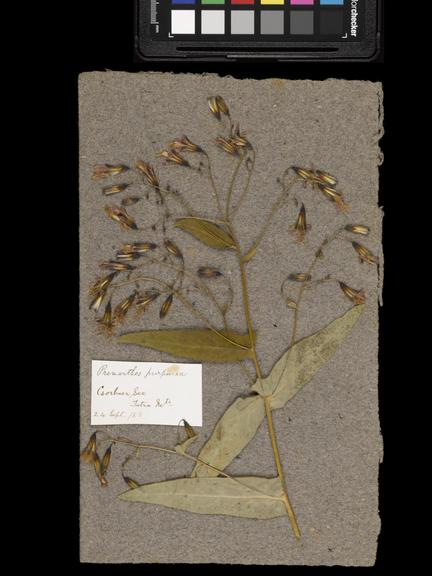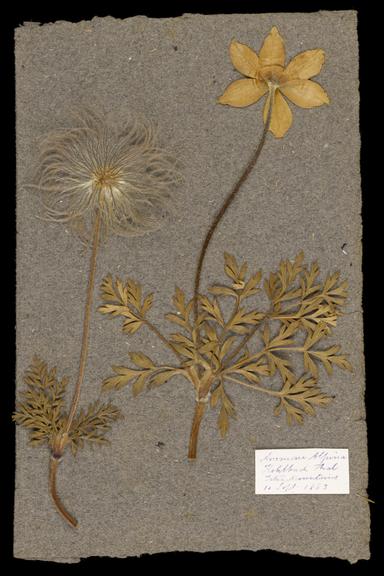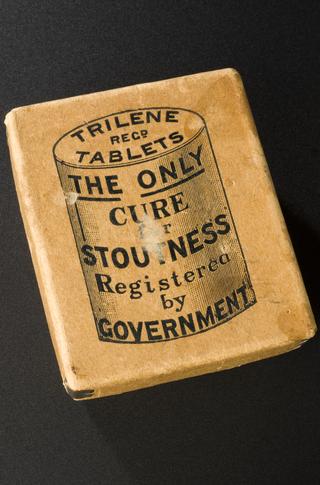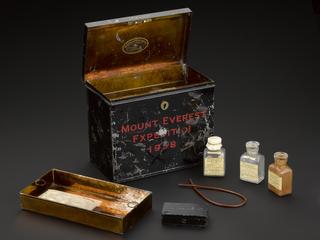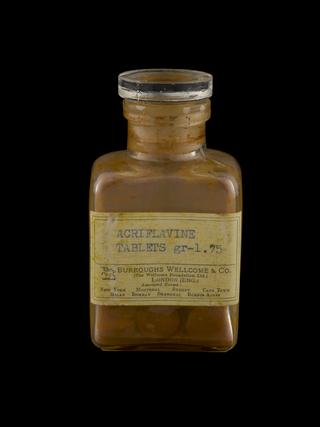Dried specimen of Ranunculus montanus, 1883.
Dried specimen of Ranunculus montanus collected by Joseph and Agnes Lister in 1883. Specimen is loose on a grey sheet of paper. See inscription field.
More
Herbarium sheets are the most common means of recording a plant on paper, as dried specimens provide botanists with direct visual comparisons. These are two of 52 specimens collected by surgeon Sir Joseph Lister and his wife Agnes while touring eastern Europe in 1883. Each is labelled with its Latin name following the categories commonly used by all botanists from the 18th century. The labels appear in both Joseph’s and Agnes’s handwriting, showing the project was a joint effort. Botany was one of few sciences considered appropriate for women to practise in the nineteenth century.
- Measurements:
-
overall: 245 mm x 150 mm
- Materials:
- paper (fibre product) and plant material
- Object Number:
- A642914 Pt1
- type:
- herbarium sheet




